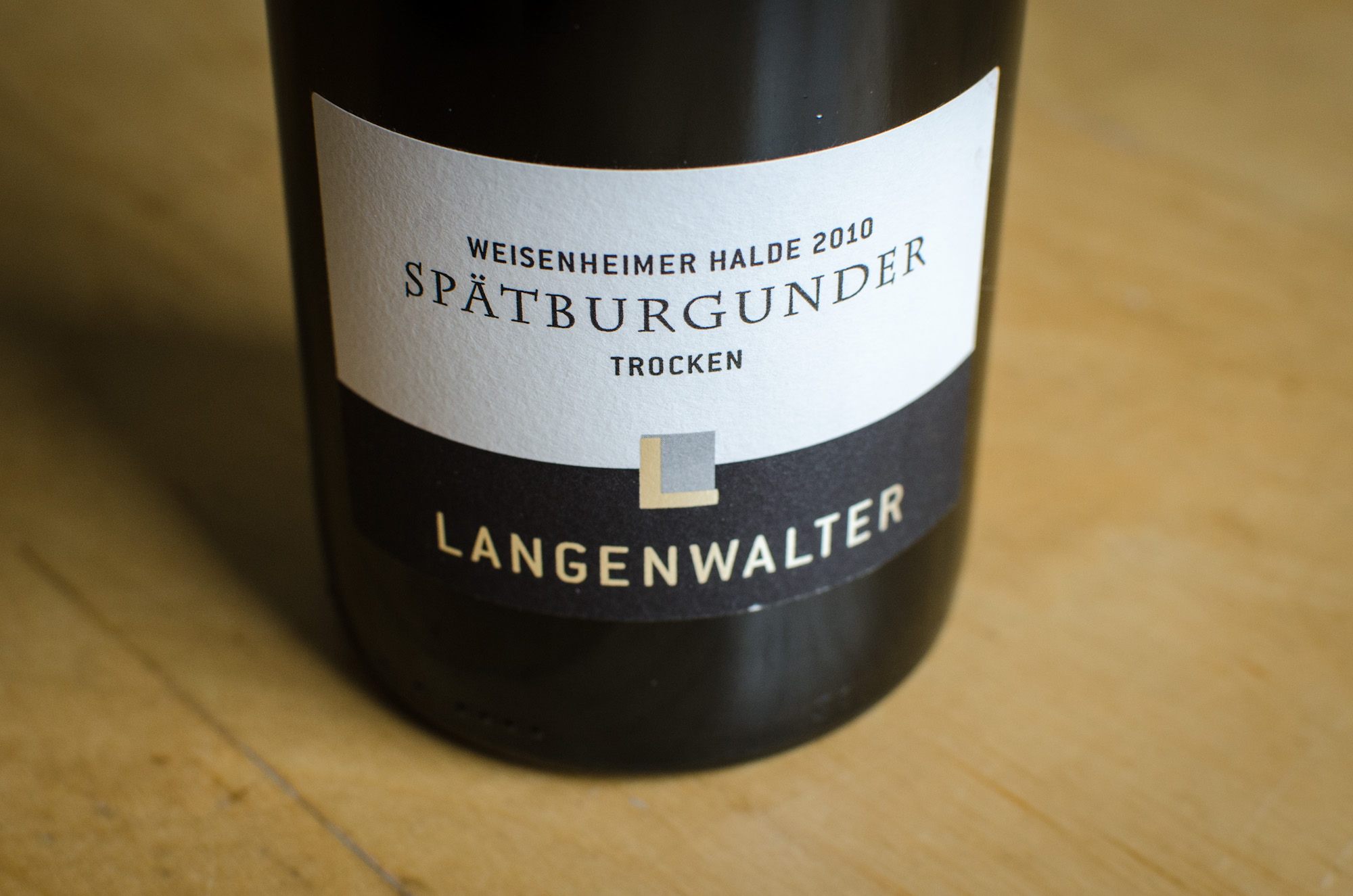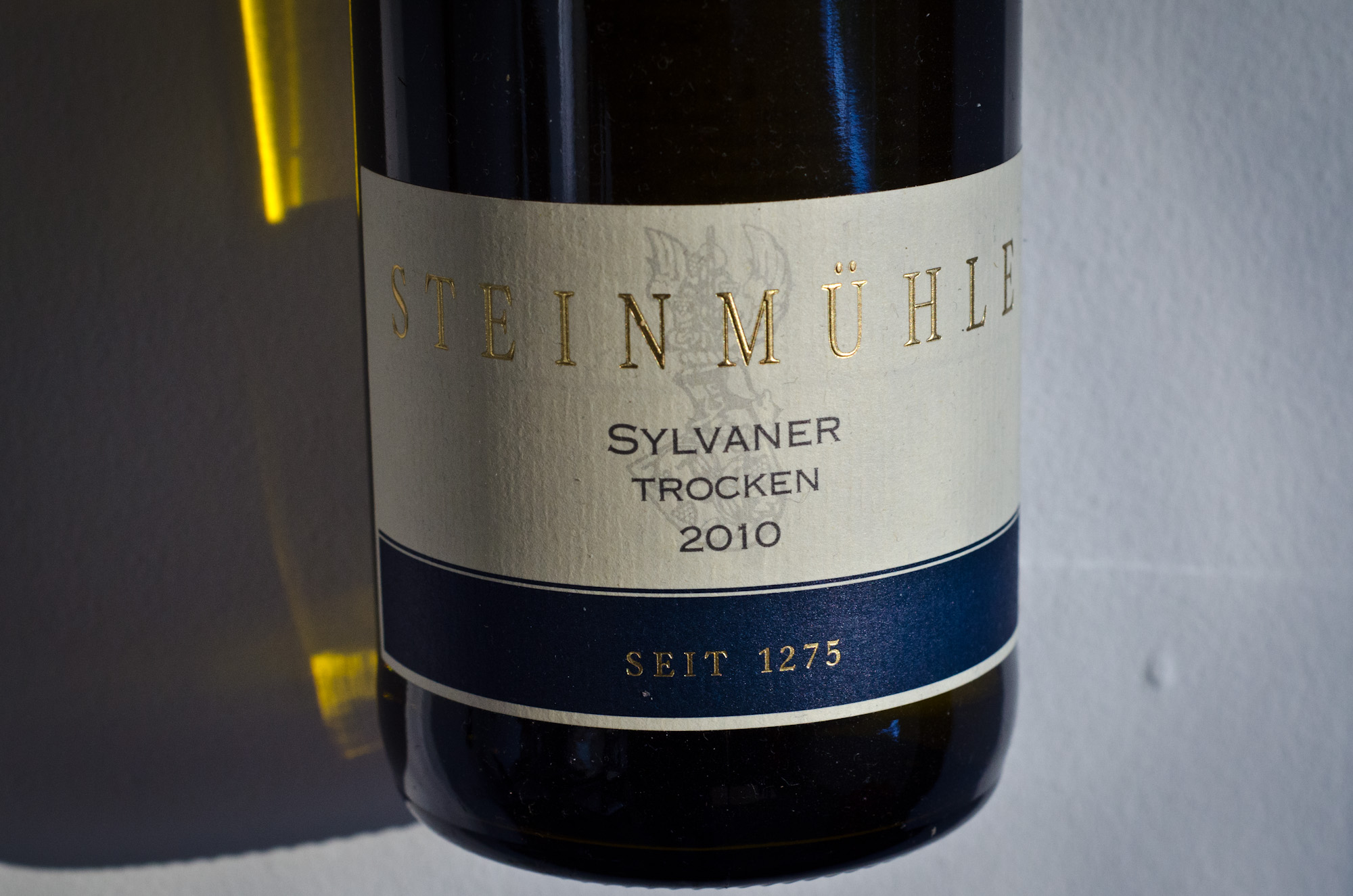Weingut Langenwalter, Weisenheimer Halde, Spätburgunder trocken, 2010
By now word has got around that there is German red wine. I mean, it has, right? If it hasn't, can you please just nod politely and leave me the illusion that after shouting about it for a few years we have at least got that message out? So, as we all know by now that there is German red wine, let's deal with the fact that there is quite a lot of it these days. Germany, for instance, is the world's third largest producer of Pinot Noir - or Spätburgunder as it is known there and as you can see on the label below.

At the Langenwalter winery they don't just make some of this - almost half the grapes grown in the Pfalz vineyards are red, actually. This includes Portugieser, Dornfelder and Cabernet Sauvignin. So you'd think that with that much quantity around and a few hundred years of family history the Langenwalters will know something about making good red wine.









